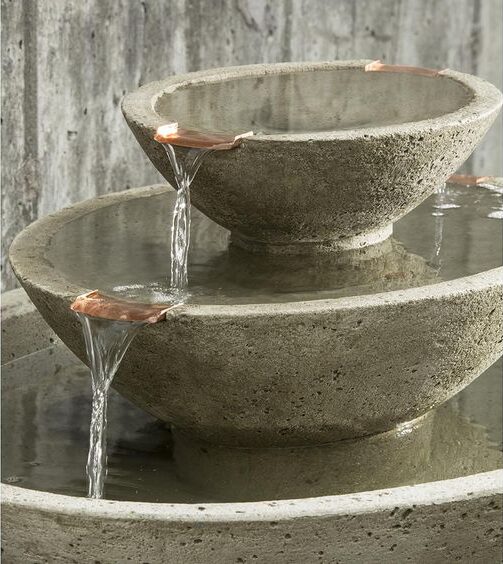new post
#003

Biophilic Design

ON THE BLOG

Creating Harmony with Nature Inside Your Home
As urban living becomes increasingly disconnected from the natural world, many people are turning to biophilic design to reconnect with nature. This design trend emphasizes the integration of natural elements such as plants, natural light, and organic materials into indoor spaces to foster a sense of well-being, balance, and tranquility. Biophilic design not only enhances the aesthetics of a home but also improves the quality of life for its inhabitants by creating environments that feel more organic, calming, and nurturing.
Incorporating biophilic design into your home is about more than just adding a few plants here and there. It’s about creating spaces that evoke a sense of being immersed in nature—spaces that soothe the soul, engage the senses, and encourage a deeper connection to the earth. Let’s explore the key principles of biophilic design and how you can use them to transform your home into a sanctuary of natural beauty and serenity.
The Science Behind Biophilic Design
Biophilic design stems from the concept of biophilia, which is the inherent human tendency to seek connections with nature and other forms of life. Research has shown that integrating natural elements into the built environment can have a wide range of positive effects on mental and physical well-being. From reducing stress and anxiety to enhancing creativity and focus, biophilic design offers a host of health benefits that make it a powerful tool for improving the quality of life in our increasingly urbanized world.
Incorporating elements of nature into your interior spaces isn’t just a fleeting trend—it’s a holistic approach to design that recognizes our deep-rooted need for a connection with the natural world. Biophilic design bridges the gap between the indoor and outdoor environments, creating harmonious spaces that promote relaxation, comfort, and overall well-being.
Key Elements of Biophilic Design
Natural Light
One of the core elements of biophilic design is maximizing the presence of natural light. Sunlight is essential to our health and well-being—it regulates our circadian rhythms, boosts our mood, and even enhances productivity. To incorporate more natural light into your home, consider large windows, skylights, or light wells that flood your space with sunlight. Mirrors can also be strategically placed to reflect light and make rooms feel brighter and more spacious. The goal is to create a space that feels open, airy, and connected to the outside world.
Indoor Plants and Greenery
Plants are the most obvious and accessible way to bring nature indoors. From lush indoor gardens to small potted plants on shelves and countertops, incorporating greenery into your home can have an immediate calming effect. Not only do plants purify the air and improve indoor air quality, but they also add life, texture, and color to your space.
For a more immersive experience, consider vertical gardens or living walls—these can serve as striking focal points that bring a sense of lushness and vitality to your home. Choose a variety of plants with different textures, colors, and shapes to create a dynamic, visually engaging space that feels truly alive.
Natural Materials
Biophilic design emphasizes the use of organic, natural materials that evoke a sense of the outdoors. Wood, stone, bamboo, and rattan are all excellent choices for flooring, furniture, and decorative accents. These materials not only add warmth and texture to your space but also foster a deeper connection to the natural world.
When selecting materials, look for those that have a tactile, organic feel. Raw, unfinished wood, natural stone, and woven fibers all contribute to a space that feels more grounded and connected to nature. Incorporating natural materials into your home adds both aesthetic beauty and a sense of calm that synthetic materials simply can’t replicate.
Water Elements
Water is another powerful element in biophilic design, offering both visual and auditory appeal. Incorporating a small indoor fountain, water feature, or even an aquarium can create a sense of tranquility and relaxation. The sound of flowing water has been shown to reduce stress and promote a calming atmosphere, making it a valuable addition to any home looking to embrace biophilic principles.
If installing a water feature isn’t feasible, you can still incorporate water through imagery—such as artwork or photographs that capture rivers, lakes, or oceans. The key is to evoke a sense of water’s soothing presence within your space.
Organic Shapes and Patterns
Incorporating natural, organic shapes and patterns into your home’s design can subtly reinforce the connection with nature. Biophilic design often moves away from straight lines and rigid geometry in favor of curves, asymmetry, and shapes that mimic the flow and rhythm of the natural world. Think of the undulating curves of a river, the branching of a tree, or the delicate veins of a leaf.
You can introduce organic patterns through textiles, wallpaper, or even the architecture of your space. For example, arched doorways, rounded furniture, or flowing patterns in rugs and upholstery can all contribute to a more nature-inspired interior.
Views of Nature
If you’re lucky enough to have a view of nature—whether it’s a garden, a park, or a distant landscape—maximize your connection to the outdoors by framing these views. Large windows or sliding glass doors that open onto outdoor spaces can create a seamless flow between indoor and outdoor living, making you feel more connected to the environment.
For those who live in more urban settings without direct access to nature, consider incorporating artwork, photographs, or murals that depict natural landscapes. Even visual representations of nature can have a positive impact on your mood and sense of well-being.
Benefits of Biophilic Design
The benefits of biophilic design extend beyond aesthetics—this approach to design has been shown to offer numerous health and wellness advantages, including:
- Reduced Stress Levels: Natural elements like plants, light, and water can help lower stress and promote relaxation.
- Improved Air Quality: Indoor plants filter and purify the air, improving overall air quality in your home.
- Enhanced Mood: The presence of natural elements can boost your mood and create a more positive living environment.
- Increased Productivity: Exposure to natural light and views of nature has been linked to improved focus and creativity.
- Better Sleep: A well-designed space that integrates natural light and circadian rhythms can help improve sleep quality and overall well-being.
